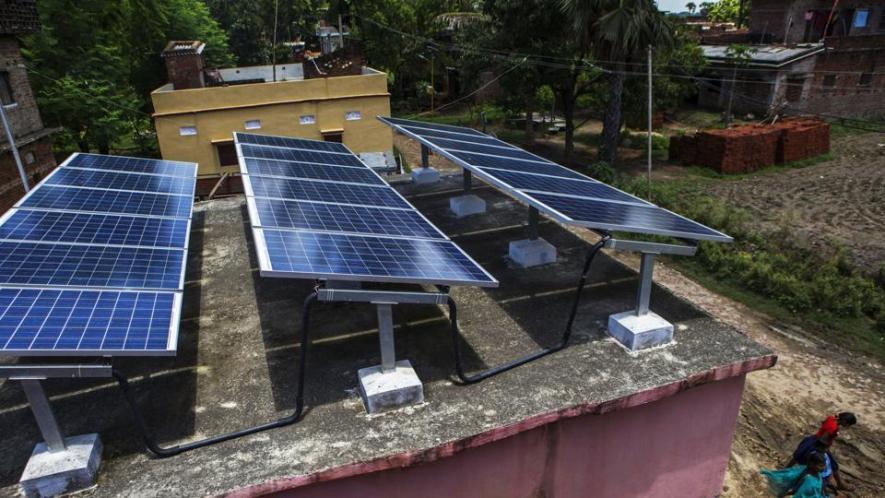Organic Material That Will Bolster Electricity Generation from Solar Energy

A solar cell absorbs photons and the energy associated with it is then transformed into electric energy. That’s the simplest principle that solar systems are based on. In a world of ever increasing demand of energy, solar system has been seen as one of the alternatives to electricity generated from fossil fuels and electricity generated from dams.
Now, scientists from the Columbia University have designed organic molecules that are capable of producing two excitons per photon of light absorbed, in a process called singlet fission. These excitons can live for much longer time period in comparison with those generated from the inorganic counterparts and this leads to amplification of the electricity generated per photon absorbed by a solar cell.
The findings were published in Nature Chemistry recently. Here, the scientists detailed the design of the organic molecules that are capable of generating two excitons per photon through the process of ‘singlet fission’.
“We have developed a new design rule for singlet fission materials. This has led us to develop the most efficient and technologically useful intramolecular singlet fission materials to date. These improvements will open the door for more efficient solar cells”—Luis Campos, one of the three principal investigators, was quoted to have said.
All modern solar panels produce one exciton per photon absorbed. The exciton can then be converted into electric current. There exist some molecules that can be used in solar panels that can convert a single photon into two excitons. These molecules are the basis for the next generation of solar electricity generation. But production of such molecules to be used in solar panels still remains in infancy. One of the challenges in the production of such molecules has been that the two excitons produced remain for an extremely short period of time and the prospect of greater electricity generation remained grim. In this perspective, the Columbia University research is surely a breakthrough.
“Intramolecular singlet fission has been demonstrated by our group and others, but the resulting excitons were either generated very slowly, or they wouldn't last very long. This work is the first to show that singlet fission can rapidly generate two excitons that can live for a very long time. This opens the door to fundamentally study how these excitons behave as they sit on individual molecules, and also to understand how they can be efficiently put to work in devices that benefit from light-amplified signals,” added Campos.
The design strategy that the team adopted is expected to be useful for other areas of scientific study as well—like photocatalytic processes in chemistry, sensors and imaging etc.
Get the latest reports & analysis with people's perspective on Protests, movements & deep analytical videos, discussions of the current affairs in your Telegram app. Subscribe to NewsClick's Telegram channel & get Real-Time updates on stories, as they get published on our website.

















